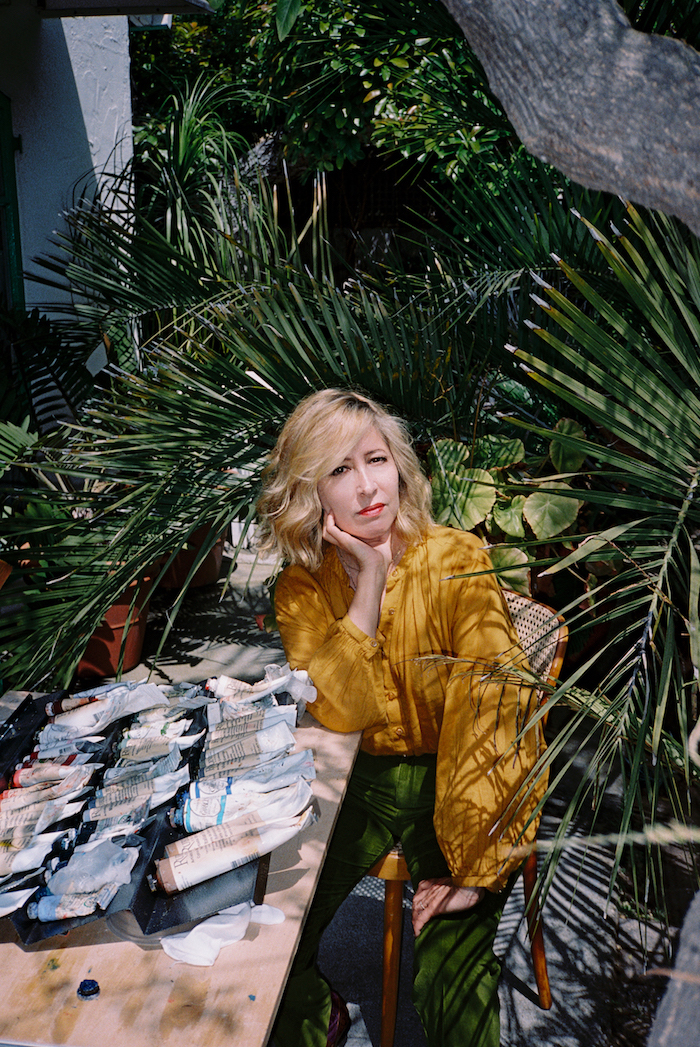
In setting out to create the cover for her new book, The New Oil Painting, a definitive guide to materials and techniques for oil painters, Kimberly Brooks found herself pirouetting amidst the void of the abstract.
“I was looking at all of these old oil painting guides and the covers are just hideous,” the artist tells me one warm day in her naturally lit Venice studio. She’s surrounded by her works, each one depicting the beginnings of a landscape, at least in my mind, but even more acutely, a swirl of a brush. “For oil painters, it’s shocking how little design sense they had.”
Her goal in her explorations was first and foremost to create an inspiring cover; one, she says, she hopes will “embolden the viewer with the power of the blank canvas.” In order to do so, she found she had to move away from narrative structure and into the abstract, something she hadn’t previously done.
“I’ve always wanted to paint abstractly,” she tells me, mellifluously crafting a story of the first time she was pushed towards the arts. It was none other than Kazimir Malevich’s White on White, a painting she describes as “too difficult to explain,” yet one that elicited an emotion in her that “all bets were off.”
Brooks’s previous works are as elegant as they are multidimensional—one can easily surmise that she is both writer and painter, as narrative structure exudes from each brushstroke. We can hear the finest details of the well-crafted story she is telling us, as she illuminates the past, present, and future of her subjects.
“Most artists of any kind, when they start off, begin by coughing up autobiography before they can really speak because they are using the medium to explore themselves. So one of my early shows was called Mom’s Friends—which was my way of understanding the medium, through myself.”
From there, Brooks eventually began subtracting from the canvas. First, people vanished from her works. Yet despite this, the narrative magnetically sought its way out through forms. She found that “An interior space, in many ways, is still a portrait. No matter how I took away the people, there was still a story in there.”
As the pandemic isolated all of us, Brooks found herself both invigorated through the arts, and more invested in them. With her book completed, she zeroed in on the cover, and began exploring ways in which to get at the very essence of a stroke.
“It makes sense,” she tells me, standing in front of her works, “the more I can separate my mind in painting, the closer it comes to being really pure.” She laughs, “I suppose the abstraction became a result of subtraction, where every aspect of my life was simplified during the pandemic. And so I could finally quiet all of those other narratives and focus on the task at hand.”
Upon closer inspection, the cover of her book swirls to life—it’s a wave, no it’s a stroke of blue in the sky, gone within a moment. Brooks relinquishes the storytelling to the viewer, and in doing so, creates a work that is a mirror for our desires: in many ways, it is what we want it to be.
This is her hope: “To achieve a certain singularity with paint.” It’s a goal she recognizes as Sisyphean, yet it motivates her nonetheless.
It does as well for me, and with her book in hand, I feel ready, inspired, invigorated to create, even if the goal remains, always, just out of reach.
Craving more culture? Sign up to receive the Cultured newsletter, a biweekly guide to what’s new and what’s next in art, architecture, design and more.




